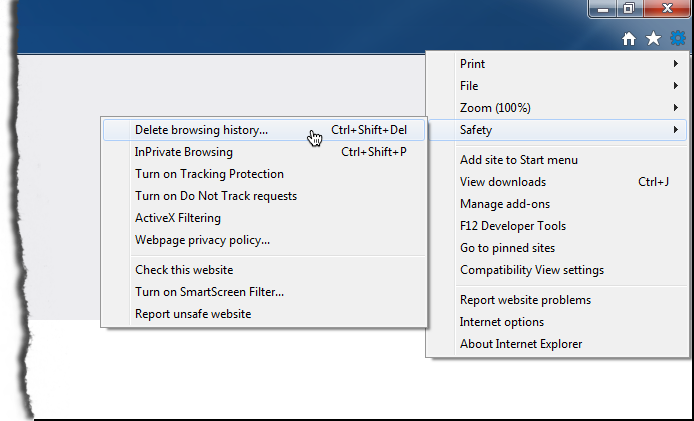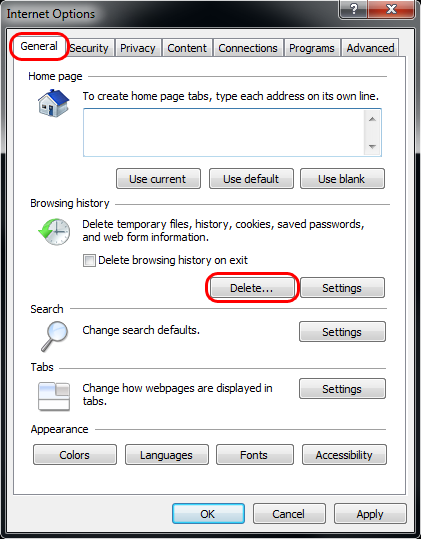
UITS strongly recommends that you use a supported browser, and not Internet Explorer (IE).In Firefox, if you don't see the menu bar, press Alt. If you're unsure what browser version you're using, from the Help menu or your browser's menu, select About. If you don't see instructions below for your specific version or browser, search your browser's Help menu for "clear cache". If the instructions below don't exactly match what you see, you may need to update your web browser to the latest version.If this doesn't work, follow the appropriate instructions below. For desktop browsers, to quickly open menus used to clear your cache, cookies, and history, ensure that the browser is open and selected, and press Ctrl-Shift-Delete (Windows) or Command-Shift-Delete (Mac).Choose Enabled and tap OK in the setting's window. Locate the setting in Computer Configuration (or User Configuration)/Administrative Templates/Windows Components/Internet Explorer/Delete Browsing History, and then double-click it.Ģ. Two sub-procedures are illustrated below for your better reference.ġ. Step 2: Find and enable the setting named " Allow deleting browsing history on exit" in Computer Configuration and User Configuration. Step 1: Turn on Local Group Policy Editor. Way 3: Erase browsing history and cookies in Local Group Policy. Step 4: Complete the 2nd, 3rd and 4th steps of Way 1. Step 3: Tap Delete browsing history and cookies to move on.


Way 2: Delete browsing history and cookies in Control Panel. Then, choose Delete in the Delete Browsing History dialog. Step 3: Choose Cookies and website data to delete. Step 2: Select Delete browsing history on exit and tap Delete on this interface. the small gear icon) on the top-right corner and choose Internet options on the menu. Step 1: In Internet Explorer, click the Tools icon (i.e.
:max_bytes(150000):strip_icc()/001-clear-private-data-cache-cookies-ie-1174070-9a628a696c4a4f5b8e8097f0e31fbac6.jpg)
Way 1: Clear cookies and browsing history in Internet Explorer.


 0 kommentar(er)
0 kommentar(er)
